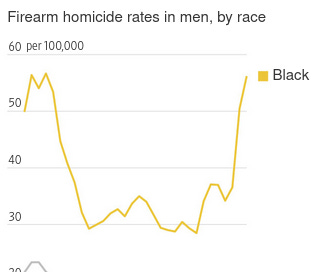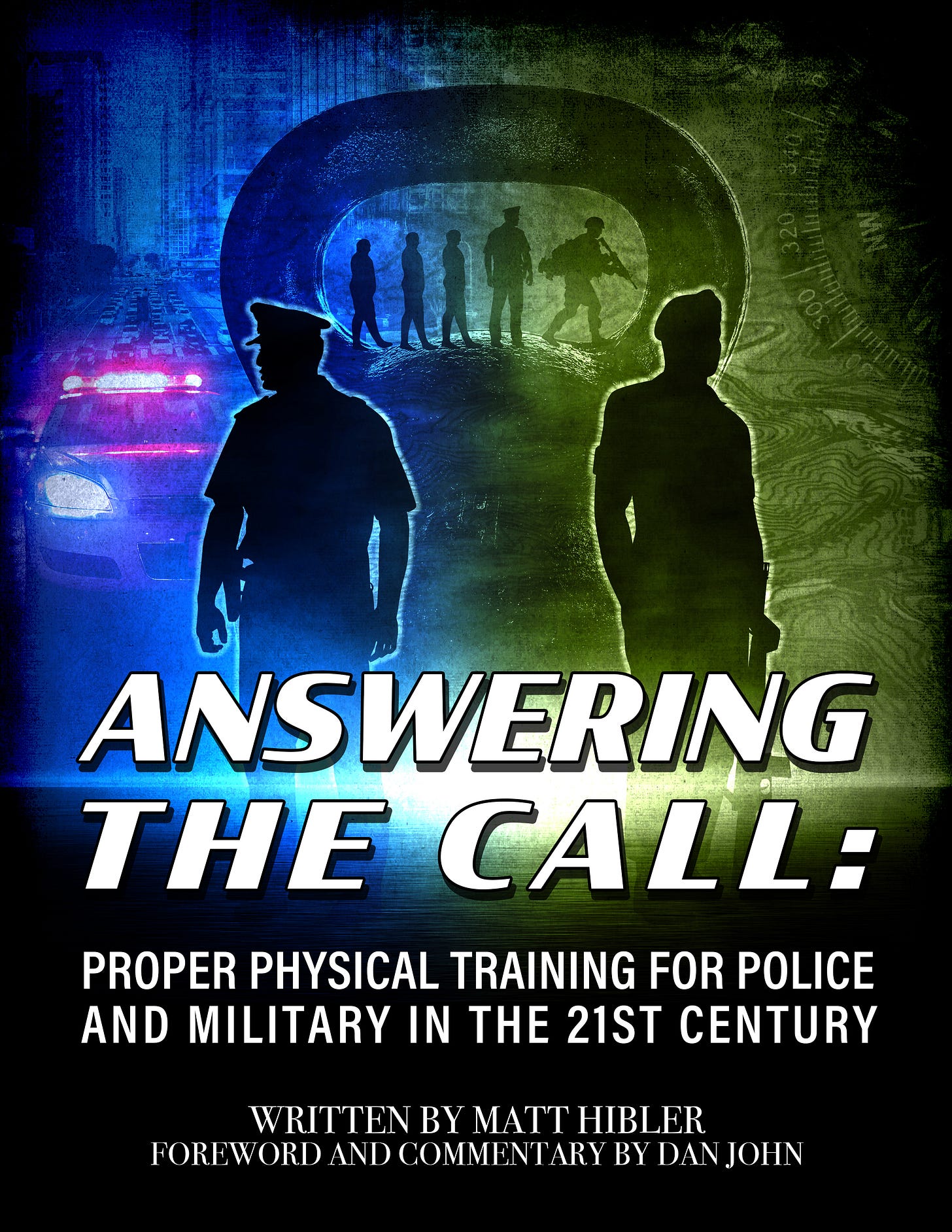Violent crime continues to rise across the United States (NY Post 2022). Even with a brief dip in murder rate, robberies and aggravated assaults rose in the first half of 2022. If I was a leader in a city government I’d be asking how we’re proactively addressing these trends.
A recent JAMA study compiled firearm fatality trends across the US from 1990-2021. Below is a graph from the study, depicting the demographics of firearm homicides during that time period; referenced both by the Wall Street Journal and
at The Free Press:What were the policy responses from city governments across the United States to address this disturbing trend disproportionately impacting African Americans?
Prohibit officers from making traffic stops for minor violations.

One winter night an officer on my shift was driving through a business district connected to a major highway. It was around midnight when he realized a car in the next lane was slowing down refusing to pass. Not always a red flag. I think people are concerned they might get stopped for speeding if they pass a cop. Ironically unless you suck the doors off the cruiser that probably won’t happen. The car also had a headlight out.
Observing the behavior, the officer slowed down below the speed limit. The car responded in kind...hmm...a bit more odd. Most people don’t have the patience to drive that slow. Maybe the driver was involved in something more serious?
This game continued, culminating with the officer pulling the vehicle over. The defective headlight was the legal reason for the stop, but the possibility that the motorist was involved in some other crime was of higher concern.

To make a long story short, guns, ski masks, and the new best-selling book, How to Commit a Home Invasion Robbery was found in the vehicle. OK, maybe the book wasn’t in the vehicle, but the officer definitely stopped a robbery and may have saved lives.
This is truly phenomenal police work and how front line officers make great cases. This intuition is hard to train, define, and for some takes years to hone. This event illustrates something known as a pretextual stop.
A unanimous decision in 1996 (Whren v. U.S.), the U.S. Supreme Court held it is lawful under the Fourth Amendment for an officer to stop a motorist when probable cause exists to believe the motorist has committed a traffic violation—regardless of the officer’s subjective intent or motivation. Many people are unaware police have to be able to legally justify why they’re temporarily seizing a person or their freedom; the minor infraction provides the legality to do so.
Opponents to this practice often cite disproportionate stops of minorities in certain neighborhoods. Los Angeles last March implemented a new policy requiring officers to state on their body camera the serious crime they’re investigating prior to initiating a stop; resulting in fewer overall stops. Some see this as a victory, but like the example above cops don’t always know what the serious crime is at first. They just know that there is a disturbance in homeostasis.
I see why these stops can be troubling. Police harassment is certainly a rough patch in our country’s history. Any officer engaging in racial profiling in the course of their duties should be immediately disciplined and fired. I would argue the majority of Americans, including police, agree with this.
However, if someone believes the mere use of pretextual stops are racist, or worse we are just curtailing racist officers through these new policies, then we’re truly broken. This logic should support the firing of every police officer in the country. What I am asking is...are we addressing poor officer behavior with these policies? Or is there something inherently wrong with the subjectivity of pretextual stops?
This powerful investigative tool can be responsibly implemented. To be effective, officers need to be trained with the best in their department (or private sector) on how to observe, recognize, and articulate behavior related to criminal activity. Experience can’t be forced. Some will pick up criminal profiling like it was second nature while others won’t. As officers professionally mature they’ll make less stops overall, but will have a higher overall seizure of weapons/wanted individuals. This just has to be cultivated and monitored.
Are the stops correlated with who is committing crime in an area, or are the demographics skewed in the wrong direction? If the stops do not follow regional crime trends, there must be intervention immediately. The numbers have to matter.
During these stops, there is no reason why officers can’t be polite and respectful. In training officers need to be taken through realistic scenarios and communicate with role players. You can conduct investigations without being a jackass.
Notes should be annotated on computer systems when these stops occur. It needs to be recorded when the single mother of three on her way to work is stopped. She doesn’t need to be stopped again unless the violation is a safety issue. If later that night there is a new driver, now the officer may have a reason to take a closer look.
Officers need to use discretion. If someone is pulled over for the third time for no brake lights, headlights, going 70 in a school zone...write the ticket. Most violent crime is concentrated in poorer areas where these stops may occur. Hammering poor people with infractions will just dig them into a deeper hole, destroying relationships between the police and the community.
Even with reasonable concerns, I don’t know how adding another layer of bureaucracy on settled Supreme Court case law solves anything. These new policies just bring ambiguity to pretextual stops. Remember the real-life example when my old coworker used his intuition to thwart a robbery. In Los Angeles, he would have to say on his microphone why he was making the stop.
What does the officer have then? The car was driving under the speed limit? Is that going to hold up when your police leadership just told you to clearly articulate the serious crime you’re investigating? Maybe. Maybe the slow speed is an impaired driver. In fact, almost any moving violation could be an impaired driver. Are officers always going to investigate an impaired driver as the reason for the pretextual stop?
If the officer makes great cases, but never finds a drunk driver, will the leadership be OK with this? Maybe. With this lack of clarity, my prediction is police will just continue to do less proactive work. Officers need a clear mission statement and intent. Police will not put themselves out there if they do not think they are backed by their leadership or most of their community.
It’s too early to tell the impacts of these policies. Officers are already doing less proactive work, particularly in major cities. Referencing the graph above the trends aren’t promising. Who are we really appealing to with these new policies?
Law abiding citizens who live in these heavily concentrated areas of violence don’t deserve to be constantly stopped and searched. This is not the argument I’m making. As someone with a combined 14 years of military and law enforcement experience I am seeing an opportunity to refine the use of a Constitutionally sound practice that when employed properly, will overwhelmingly save lives.
In 2022, 650 people were killed in Chicago, 326 in St. Louis, 317 in Baltimore, and 205 in Milwaukee. Overwhelmingly these victims are minorities. In almost any other circumstance numbers like these would be considered a national emergency. Keep in mind that is just a few cities, and we still have the rest of December left. People who live in these areas do not deserve this.
Intelligence led policing combined with trained, physically fit, professional, and educated officers will be needed to address this. Even with quality social programs it will be very hard to garner investment into areas with this level of violence. There is no reason why social outreach and addressing violent crime has to be mutually exclusive. We can do both.
Lets hope city leaders across the country adjusts to community needs, and not just to the loudest person in the room.







A very difficult conversation but a well written article with some great points from a former cop and now educated leader. Share this.
This article was so bad it gave me cancer. I don’t have enough time or crayons to explain the flaws in logic as it’s at least 1 per paragraph.
Please re-read this and reconsider ever writing again